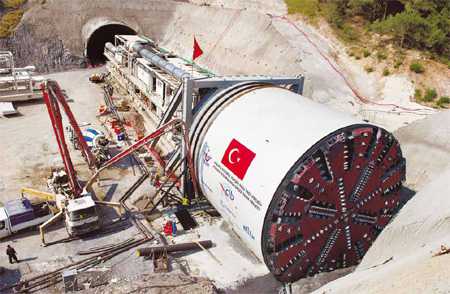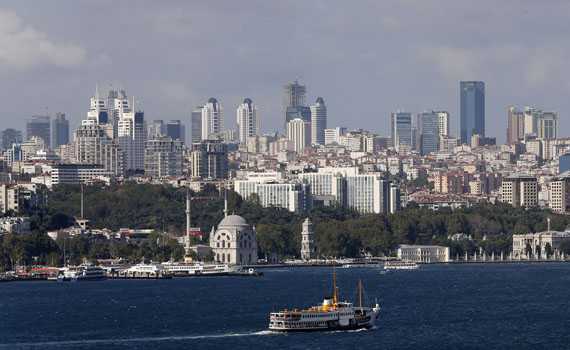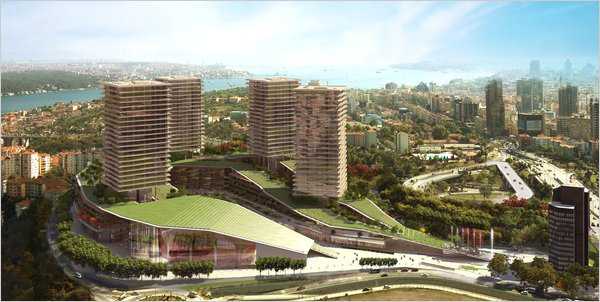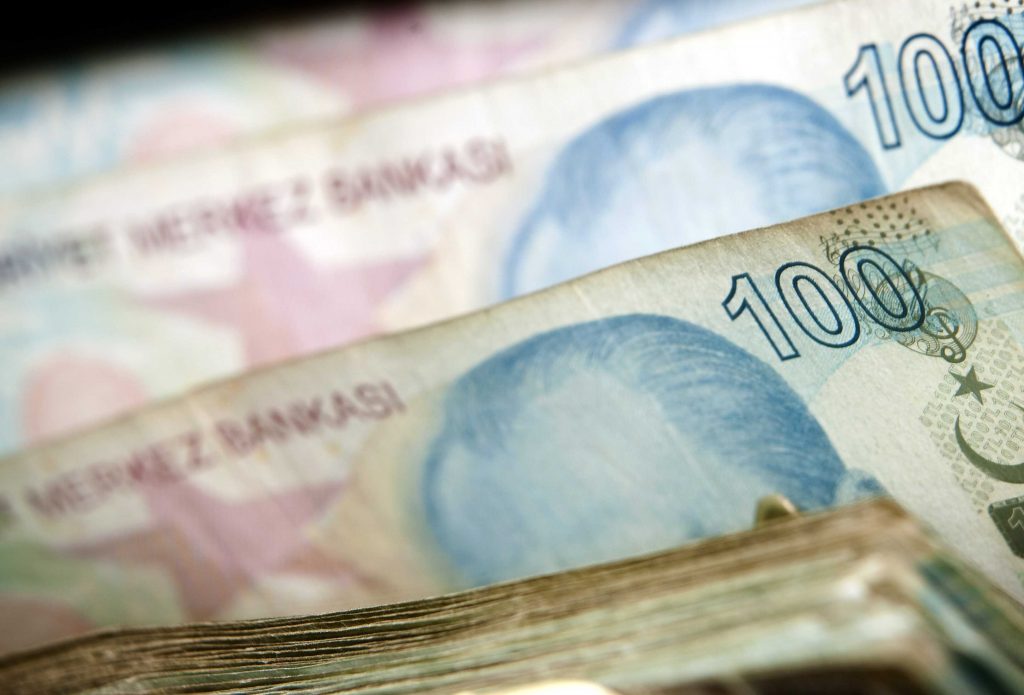
A tunnel-boring machine is crucial in building a high-speed railroad in Turkey. The current phase covers 158 km, and just over one-third of the track must travel through tunnels. The longest is 6.1 km. Zhang Haizhou / China Daily
|
Ge Meng, an engineer, is one of about 40 Chinese working on this project. Zhang Haizhou / China Daily |
Project serves as springboard to enter European market, reports Zhang Haizhou in Ankara.
It was noontime and the temperature was more than 30 C on this typical summer day in Pamukova, in mountainous west Turkey.
When everyone else was having a lunch break indoors, chief engineer Wu Jiuyi was standing in the sun, staring at steel tracks piled and glinting on the muddy land, 160 kilometers southeast of Istanbul.
“We have everything ready,” he said as he scratched his forehead. “If the Turks can hand over the finished groundwork we can lay the tracks quickly and do the other work to wrap up this project.”
The project is a 158-km high-speed railway (HSR) between Inonu and Kosekoy, Phase 2 of a prospective 533-km Ankara-Istanbul line.
Expected running speed on the new line will be 250 km/h.
As high-speed rail develops rapidly in China, the country is working hard to sell its technology and products to Europe.
News reports have mentioned China’s ambitions to have its high-speed rail operating in European countries, including the United Kingdom, Bulgaria and Hungary.
But the project Wu and his colleagues, from the China Civil Engineering Construction Corp, are building in Turkey remains the only Chinese HSR project in Europe.
Turkey’s economy is counted as European, and ranked sixth, as the country seeks membership in the European Union. Geographically, about 97 percent of Turkey lies in Asia and the 3 percent in the extreme northwest in Europe.
Construction began in October 2008, and plans call for the line to open by December 2013.
“We now have 35,000 tons of steel track, bought from Italy, ready for the project. All other equipment is almost ready, too,” said Wu, who’s the chief engineer in charge of laying all the tracks.
On Monday, the first batch of equipment from China was unloaded at Istanbul’s Haydarpasa port. It included two 117-ton freight locomotives and a special ballast-roller.
Two Turkish companies, in partnership with China Civil Engineering, are doing the groundwork. In mountainous Turkey, Wu and his colleagues have frankly expressed their concern that the work may be delayed.
The terrain poses the biggest difficulty, said Zheng Jianbing, senior engineer and assistant president of China Civil Engineering. “Phase 2 is the most difficult part of the Ankara-Istanbul HSR.”
Although the project is just 158 km long, 55 km of it involves tunnels and 10 km is bridges. The longest tunnel is 6.1 km, the longest bridge 1.96 km. The highest part of the project is more than 800 meters above sea level, the lowest about 20 meters.
“More surveys than expected need to be done during the course of the construction due to the difficult terrain. The influence on the progress is quite big,” Zheng said.
Springboard to Europe
Despite those challenges, Zheng said the 158-km project is very significant for the company and the development of Chinese high-speed rail overseas. “We consider it a springboard to enter the European market.”
And it will produce “zero” financial profit for his company, he said.
But Zheng, who has spent more than a decade building railways abroad, also said China should take a measured pace in trying to push its technology into the European market.
Take Bulgaria, for example. Alexander Tsvetkov, then Bulgaria’s minister of transport, announced in early November that Sofia had been invited to join the project for high-speed rail from China through Turkey and Bulgaria to central and western Europe.
Zheng admitted his company hopes to extend its business to Bulgaria, but he said it’s still too early for a concrete plan or project.
“I think it’s better to be slow,” he said. “It’s a fresh market, and there are many rules in the European market. Like in Turkey, I still cannot say I understand everything, though we began here in 2004.”
Some European high-speed rails have noticed China’s designs on the European market. “China is about to rise to a true global competitor,” said Alexander Machowetz, a spokesman for Siemens Industry Sector in Germany.
Machowetz said Siemens “acknowledges the ambitious goals of the Chinese manufacturers in the international markets”, but he also said his company has been “very successful” as a supplier of high-speed rail technology in the Chinese market over the past few years.
“International competition and cooperation in project-based partnerships” are common in railway projects, he said, but “Siemens has proven its ability to cope with competition of any kind”.
Hiring locally
Construction of Phase 2 began in 2008, but China Civil Engineering started its preparation as early as 2004 to win the bid for the project. Thirty companies, including some from Japan, South Korea and Europe, formed eight partnerships in the competition.
China Civil Engineering’s partnership, with China National Machinery Import & Export Corp and two Turkish companies, Cengiz and IC Ictas, won the bid in December 2005. The contract was signed in July 2006.
A total of $1.27 billion was raised from both countries. China contributed $720 million in loans.
Now more than 1,000 laborers, technicians and support staff are working on the project. Just over 40 are from China, Zheng said. “We hope in the future to have only a few senior Chinese administrative staff here, leaving all other jobs to local people.”
Talking about its future here, Zheng said the company is in discussion with Turkey about building a 2,000-km high-speed railway linking the border towns Edirne in the northwest, close to Bulgaria and Greece, and Kars in the northeast, near Georgia and Armenia.
“We are discussing with them. We want to cut the project into different phases and construct them one by one,” he said.
Turkish State Railways, which is in charge of the country’s HSR development, had not responded by deadline to a China Daily interview request on whether China would get more projects.
But according to the agency, Turkey plans to construct some 6,000 km of high-speed railway by 2023, the country’s 100th anniversary.
The Ankara-Istanbul line is the country’s first high-speed line. Phase 1, which runs more than 200 km from Ankara west to Eskisehir, was built by a Spanish company and opened in early 2009.
When the entire line opens, travel time between Ankara and Istanbul, the country’s two largest cities, will shorten from seven hours to less than four.
Sino-Turkish ties
“HSR is just a beginning for further economic cooperation” between Turkey and China, said Selcuk Colakoglu, director of Asia-Pacific Studies at Ankara-based International Strategic Research Organization.
“Turkey has transformed itself from a security state to a trading state during the past decade. If you want to be a trading state, you should have a very developed transportation link.” Colakoglu added that building HSR links throughout Turkey is “very important for a sustainable rapid development”.
China’s support in Turkey’s high-speed rail would be “beneficial for both Beijing and Ankara”, he said. “China seems a best alternative to build HSR with high-tech and reasonable cost, including financial support. I believe that some other strategic cooperation would follow construction of HSR.”
Xiao Junzheng, political counselor at the Chinese Embassy in Ankara, said the $1.27 billion Phase 2 of the Ankara-Istanbul high-speed line is the two countries’ biggest cooperative construction project.
“The project has enhanced the confidence of the Turkish government and market in Chinese technology,” Xiao said.
He said the project will not only deepen Sino-Turkish economic cooperation, but also will bring “significant” benefits to Turkey’s economic development. For example, Xiao said, the number of rail passengers between Ankara and Istanbul is expected to rise from 4,000 daily to 25,000 when the high-speed railway opens.
When asked if China would aim at more HSR projects in Turkey, Xiao said, “The Turkish market is a very big one, so it is not possible for it to be dominated by any single country or company. Also, the investment would be really big.
“China is just a latecomer in the construction market here,” he said. “South Korea, Japan and Russia are all more active. But I believe Chinese companies can stand firm in Turkey’s construction contract market with their technology strength and good credit.”
Stefaan Van Kerchove contributed to this report from Brussels.
(China Daily 07/16/2011 page12)




